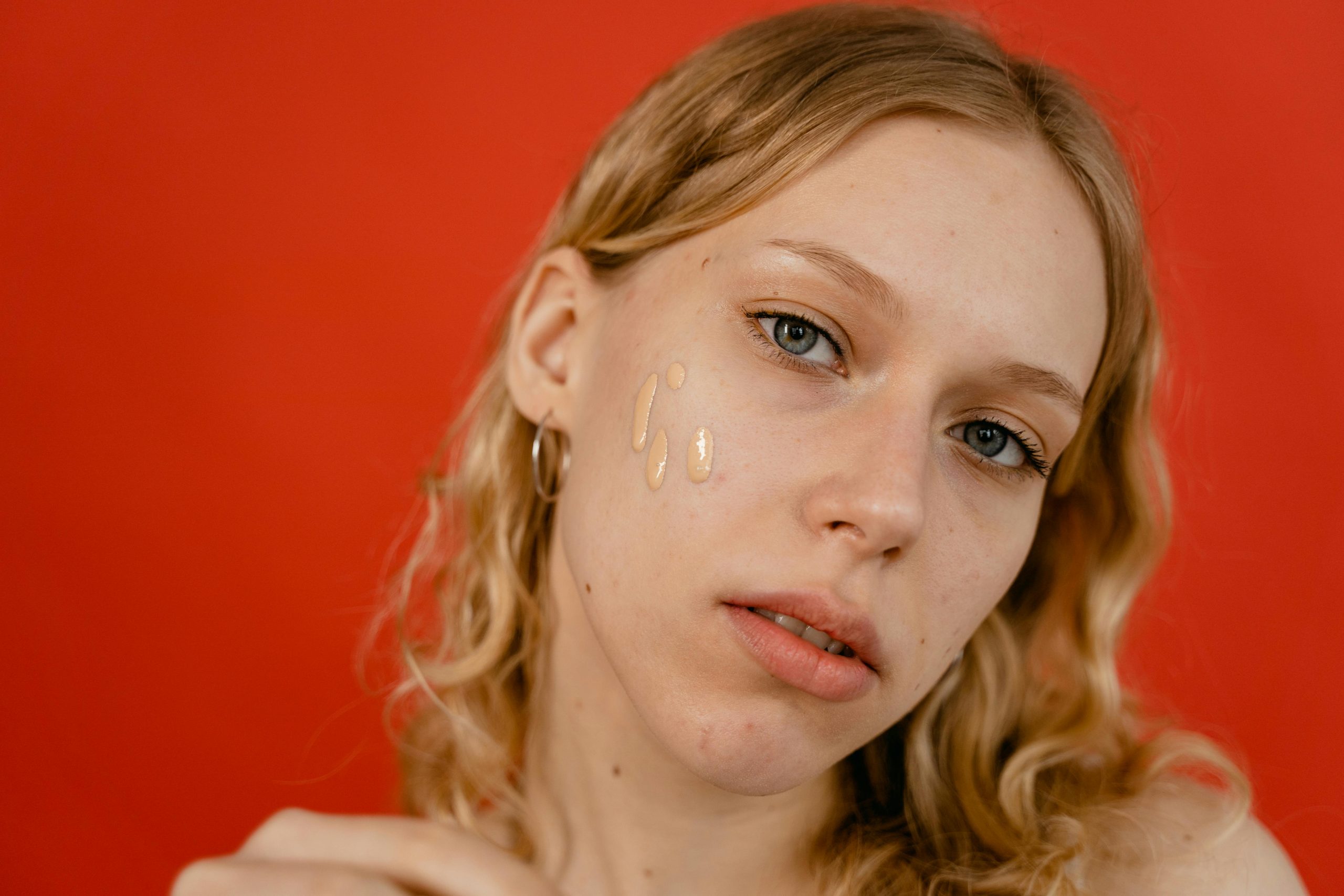Some days call for full glam, but most mornings? You just want something quick that still makes you look put together. That’s where choosing the right base product comes in. Both skin tints and foundations promise to even out your complexion, yet they do it in completely different ways.
If you’re figuring out how to do makeup that feels effortless but still enhances your features, understanding the difference between these two products is a great place to start. This guide breaks it all down so you can decide which one belongs in your daily routine.
What Is a Skin Tint?

A skin tint is a lightweight complexion product designed to even out skin tone while letting your natural skin shine through. Think of it as your skin—but slightly enhanced.
Key Features of Skin Tints:
- Light coverage
- Sheer finish (often dewy or radiant)
- Feels weightless
- Often infused with skincare ingredients like hyaluronic acid, SPF, or antioxidants
Skin tints are perfect for people who want a “no-makeup makeup look” or have relatively even skin that doesn’t need much correction.
What Is Foundation?
Foundation, on the other hand, is a traditional base makeup product designed to offer buildable coverage. It’s used to create a blank canvas by covering imperfections, redness, and uneven tone.
Key Features of Foundations:
- Available in light to full coverage
- Comes in various finishes: matte, satin, natural, or dewy
- Long-lasting formulas
- Can be layered with other products like concealer and powder
While it can still look natural when applied correctly, foundation is usually a bit more noticeable and structured compared to a skin tint.
Skin Tint vs Foundation: What’s the Main Difference?
The major difference between skin tint and foundation lies in the coverage and finish.
| Feature | Skin Tint | Foundation |
| Coverage | Sheer to light | Light to full |
| Feel | Barely-there, breathable | Ranges from lightweight to heavy |
| Finish | Dewy or natural | Matte, satin, or dewy |
| Best For | Natural, minimal looks | Full glam or more coverage |
| Application | Fingers, brush, or sponge | Brush, sponge, or airbrush |
Which One Is Better for a Natural Look?

If your top priority is looking natural, a skin tint is often the clear winner. It offers just enough coverage to enhance your skin without masking its texture or tone.
Why Skin Tints Win for Everyday Use:
- Less time-consuming to apply
- Doesn’t require precise blending
- Blurs imperfections subtly without hiding them
- Keeps your skin breathable, especially in warmer months
- Easy to touch up or reapply during the day
That said, some foundations are designed to mimic skin-like finishes and can also work beautifully for a natural look—especially the newer lightweight formulas labeled as “serum foundations” or “tinted moisturizers.”
When to Choose Foundation Instead
Although skin tints are great for a casual, natural glow, there are times when foundation may be the better option.
Consider foundation if:
- You want longer-lasting coverage
- You have acne, redness, or hyperpigmentation you’d like to conceal
- You’re attending a formal event or photoshoot
- You’ll be under hot lights or in high-humidity areas
- You need to match your face to self-tanned or uneven skin
The key is to choose a foundation that offers a “natural finish” and apply it with a light hand. A damp sponge or stippling brush can help blend foundation seamlessly into the skin.
Pros and Cons Breakdown
Let’s simplify the decision further with a side-by-side list.
Skin Tint Pros:
- Lightweight and breathable
- Easy to apply and blend
- Often includes skincare benefits
- Great for hot or humid climates
- Ideal for minimalist makeup routines
Skin Tint Cons:
- Less coverage
- May not last as long
- Might not suit oily skin types as well
- Not ideal for covering significant discoloration
Foundation Pros:
- More coverage options
- Longer wear time
- Works well with other complexion products
- Can offer different finishes to suit your skin type
Foundation Cons:
- Can feel heavy if layered
- May highlight texture or dry patches
- Requires more blending skill
- Takes more time to apply properly
Skin Type Matters
The type of product you reach for should also depend on your skin type.
- Oily Skin: You may prefer lightweight, oil-free foundations or matte skin tints. Look for non-comedogenic formulas.
- Dry Skin: A hydrating skin tint with ingredients like glycerin or squalane might work better. Some foundations can cling to dry patches.
- Combination Skin: You might enjoy a tinted moisturizer or a light-coverage foundation in key areas only.
- Sensitive Skin: Skin tints with clean, minimal ingredients and added SPF can offer a gentle solution.
Application Tips for a Natural Finish
Learning how to do makeup with a natural finish starts with the right application technique, whether you use a skin tint or a lightweight foundation.
Tips for Using Skin Tint:
- Use fingers for the most natural blend
- Apply a lightweight moisturizer or primer underneath for smoothness
- Spot-conceal only where needed (like blemishes or under eyes)
Tips for Using Foundation:
- Use a damp sponge for sheer, even coverage
- Build in thin layers instead of applying all at once
- Set lightly with translucent powder only where you get oily
Pro Tip: Mix your foundation with a moisturizer to sheer it out and turn it into a DIY skin tint!
Can You Use Both?
Absolutely. There’s no rule that says you have to choose one or the other. In fact, many people use a skin tint during the week and switch to foundation for special events or long days.
Some even combine the two—a skin tint as an all-over base, followed by a bit of foundation where they want more coverage (like the center of the face or jawline).
So, Which Should You Choose?
Here’s a quick cheat sheet:
- Choose skin tint if: You want a natural, quick, and breathable everyday look.
- Choose foundation if: You need more coverage, longevity, or are heading to a more formal setting.
Wrapping Up
When it comes to skin tint vs foundation, it’s not about which one is “better” universally—it’s about which is better for you, your skin, and your day. If your everyday makeup goal is natural, low-maintenance, and skin-like, then skin tint is a solid go-to. If you need more structure and longer wear, foundation has your back.
The beauty of modern makeup is the flexibility to mix, match, and tailor your products to your own style. Try both and see what works best for your skin and your routine. https://pusulabet.win/









